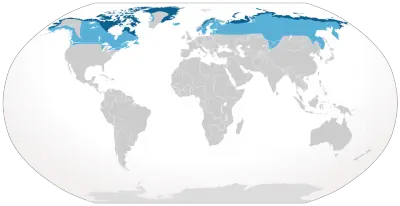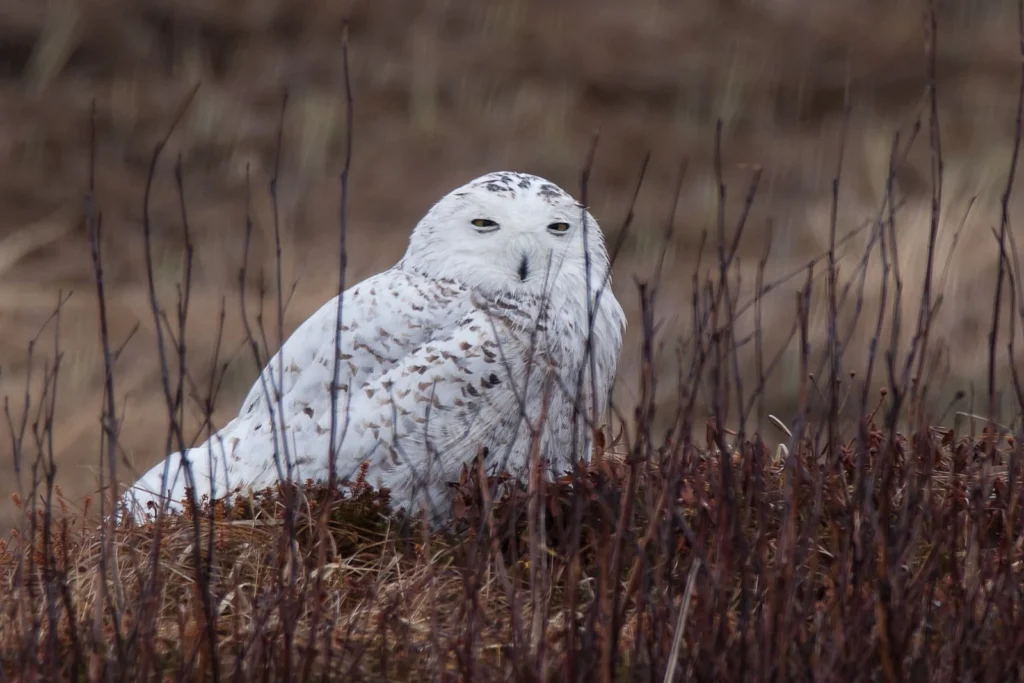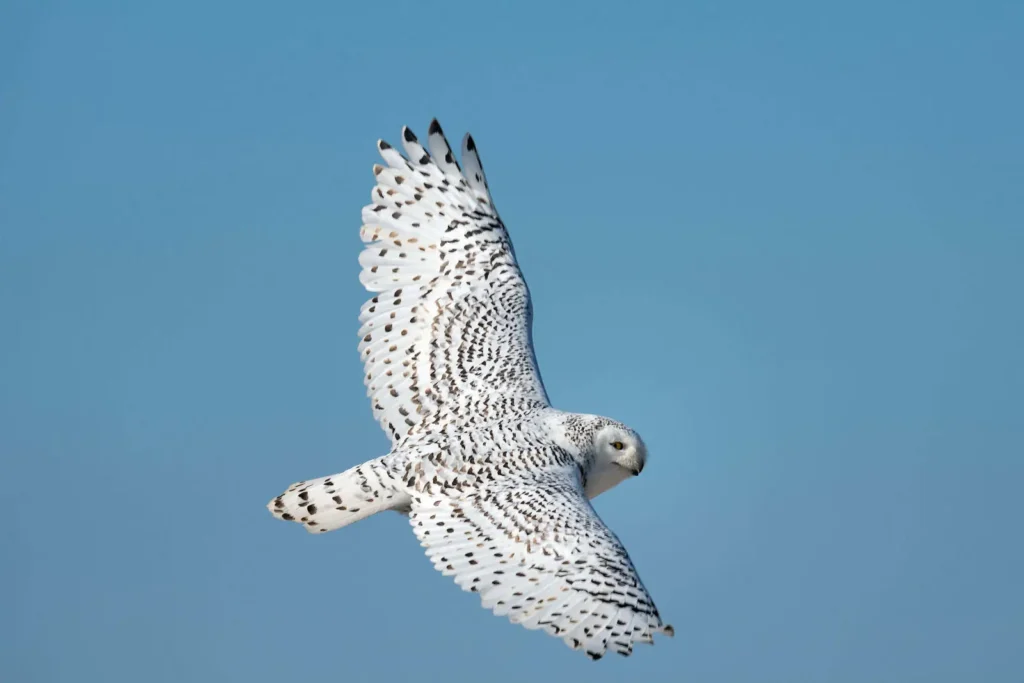Snowy owl (Bubo scandiacus, earlier Nyctea scandiaca) is one of the most famous birds in the Arctic. Its snow-white feathers, ability to hunt in harsh conditions, and mysterious look have made it a symbol of northern wildlife.

Classification
• Kingdom: Animals (Animalia)
- Type: Chordate
- Class: Birds (Aves)
- Order: Strigiformes
- Family: Owls (Strigidae)
- Species: Bubo
- Species: Snowy Owl (Bubo scandiacus)
Appearance
📏 Sizes
- Body length: 53-66 cm
- Wingspan: 125-160 cm
- Weight: 1.6-3 kg
🎨 Description
- A majestic bird with a rounded head and no ears characteristic of owls
- Feathers are thick, white, with dark spots - males have fewer spots, females have more
- Eyes are bright yellow, large, and adapted to seeing at dusk
- Powerful claws, short, hooked beak

Range and habitat
🌍 Area
- Arctic tundra of Eurasia and North America
- In winter, it can migrate south to Canada, the USA, Northern Europe, and Siberia
🌿 Living environment
- Open spaces: tundra, arctic plains, islands
- In winter, it can occur in agricultural fields, coasts, and meadows
Environmental role
- Controls rodent populations, including lemmings, a key predator of the tundra
- Stabilizes the number of small mammals, affecting the ecosystem of tundra regions
Behavior
👥 Social structure
- Mostly solitary, but form pairs during the nesting season
- Territorial, especially during reproduction
🌗 Activity
- They are active throughout the day, especially in summer when it is a polar day in the tundra
- In winter, they can be active mainly at dusk
🦶 Communication and protection
- They communicate by low "buzzes", sometimes by clicking their beaks
- In case of danger, they can attack enemies, especially when defending the nest

Food
🍃 Food.
- The main prey are lemmings, as well as mice, voles, hares, and birds
- It can eat up to 10 lemmings per day
- When there is a lack of food in the tundra, they move south
Reproduction
💞 Mating
- Nesting begins in spring, depending on climatic conditions
- Males attract females with demonstrative flights and sounds
🐣 Birth and upbringing of chicks
- The female lays 3-11 eggs and incubates them for about a month
- Male brings food during the incubation period
- The chicks leave the nest after 3-4 weeks, but still depend on their parents for some time
Natural enemies
🐅 The main predators
- Ravens, foxes, arctic foxes can threaten eggs or chicks
- Adults have few natural enemies due to their size and aggressive defense

Threats to livelihoods
🔻 Main threats
- Climate change affects the number of lemmings - the main food
- Environmental pollution with heavy metals and chemicals
- Disturbance during nesting (tourism, research)
Population and conservation status
📉 Current status
• Чисельність змінюється залежно від року та популяцій лемінгів
• У деяких регіонах чисельність скорочується
🟡 IUCN: Близький до загрозливого (Near Threatened)
📜 Охороняється в ряді країн, включаючи Канаду, Росію, США, Фінляндію
Interesting facts
✔️ Сова біла стала символом півночі та популярною в культурі (наприклад, Гедвіґ з «Гаррі Поттера»)
✔️ Може долати сотні кілометрів під час кочівель у пошуках їжі
✔️ Її політ безшумний завдяки спеціальній структурі пір’я
Conclusion
Сова біла — не просто гарна птаха, а справжній символ Арктики. Її здатність виживати в екстремальних умовах, виняткова тиша під час польоту та чарівна зовнішність роблять її унікальною серед птахів. Збереження її середовища — наш спільний обов’язок перед природою.